Death tollpublished at 19:00 BST 1 July 2016
An accurate death toll over the course of the Battle of the Somme is an impossibility. But it is thought that as many as a million men were killed in those 20 weeks.
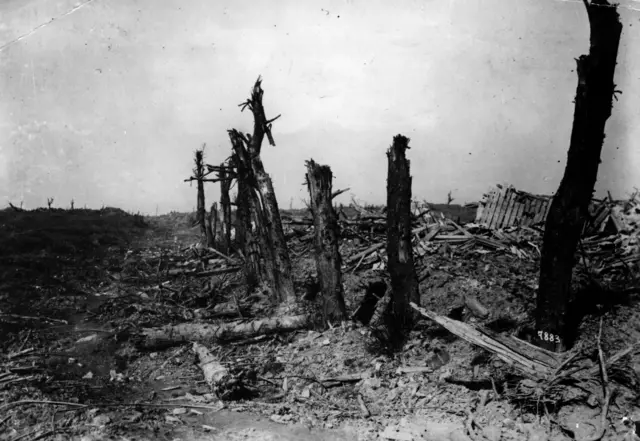 Image source, Getty Images
Image source, Getty ImagesBattle of the Somme - as it happened
Almost 20,000 British soldiers were killed on the opening day of the battle
2,069 men from the 36th Ulster Division were killed at the Somme on 1 July 1916
All times are +1 hour BST
Picture: Attack on Thiepval, Getty Images
Eunan McConville and Lee Costello
An accurate death toll over the course of the Battle of the Somme is an impossibility. But it is thought that as many as a million men were killed in those 20 weeks.
 Image source, Getty Images
Image source, Getty ImagesIn early 1917, the Germans fell back to the safety of the Hindenburg line - negating all the gains for which the Allies had paid such a high price.
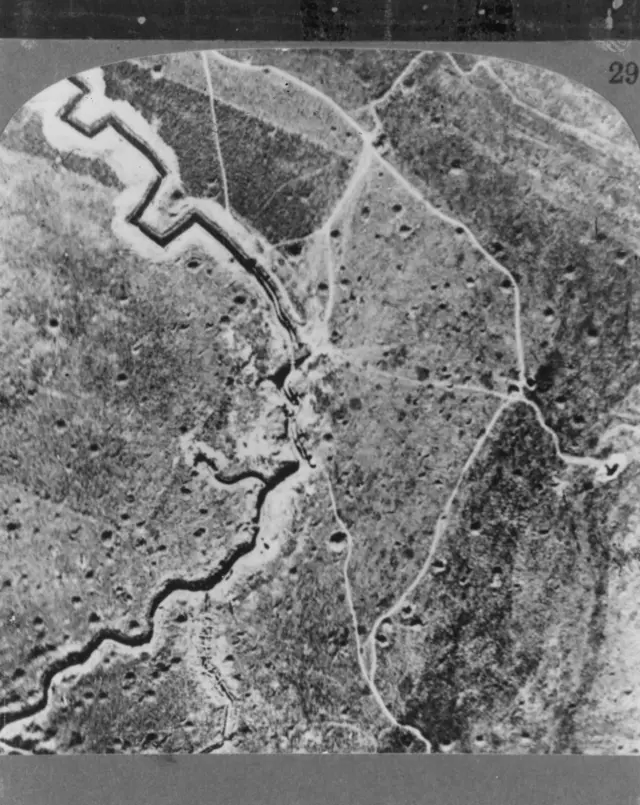 Image source, Getty Images
Image source, Getty ImagesThe Hindenburg line
The Battle of the Somme saw British improvements in trench warfare. The creeping barrage was improved; tanks were used for the first time; intelligence got better.
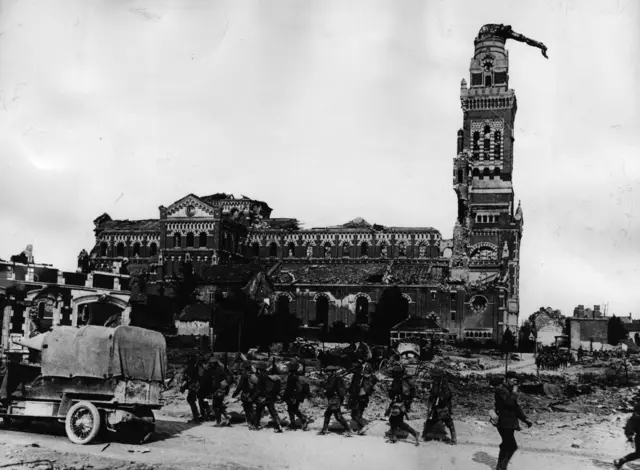 Image source, Getty Images
Image source, Getty ImagesThe Battle of the Somme would continue for almost five months. The British lines moved forward by about 4.5 miles (7km).
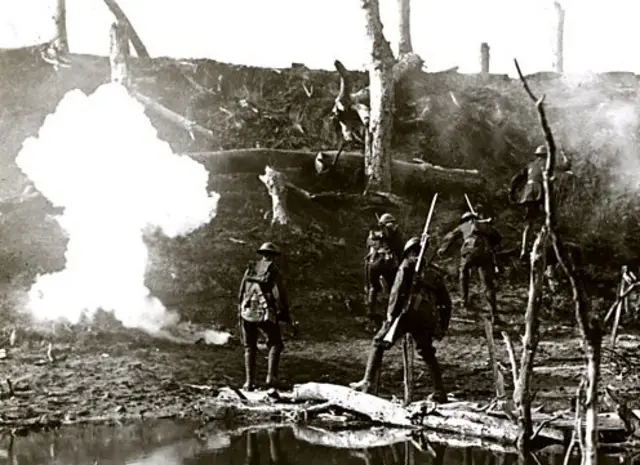 Image source, Getty Images
Image source, Getty ImagesAs dusk descends on the Somme, it becomes apparent that the British army has suffered its bloodiest day. In all, the first day saw 57,470 British casualties - 19,240 dead. In comparison the German army had around 6,000 casualties.
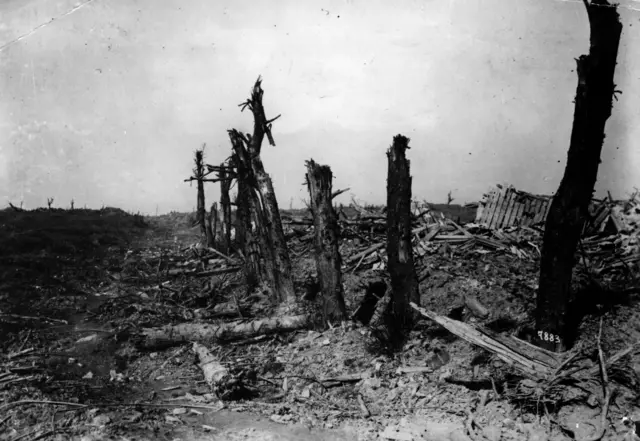 Image source, Getty Images
Image source, Getty ImagesThe 36th Ulster Division finishes the first day of the Battle of the Somme right back where they started. But with more than 5,000 casualties - around 2,069 of them lying dead.
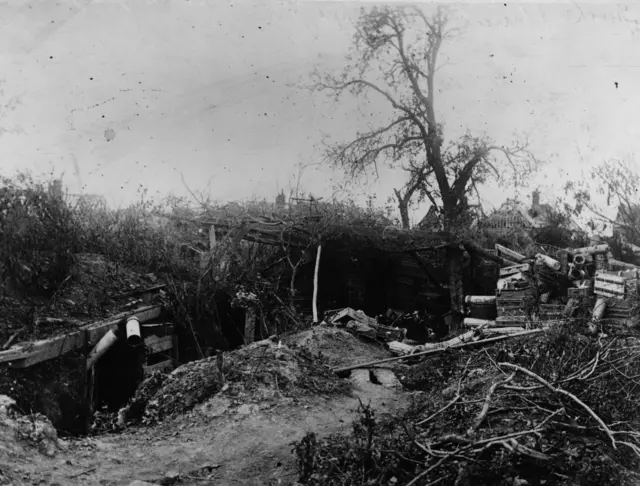 Image source, Getty Images
Image source, Getty ImagesThe battle rages on into the evening. The first day is yet not over but the casualties count is rising at an alarming rate.
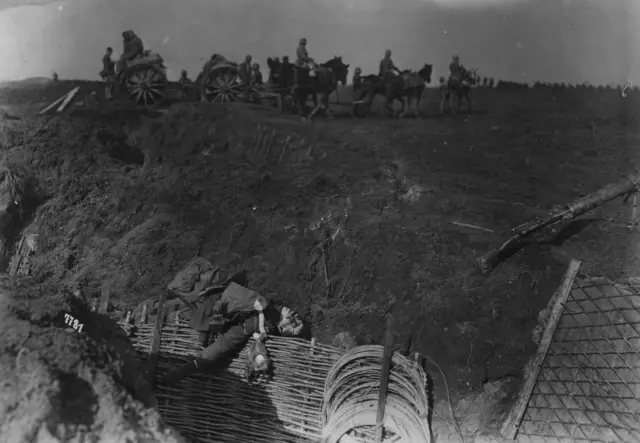 Image source, Getty images
Image source, Getty imagesOn the way back towards the British front lines, they meet the reinforcements they were hoping for about seven hours earlier.
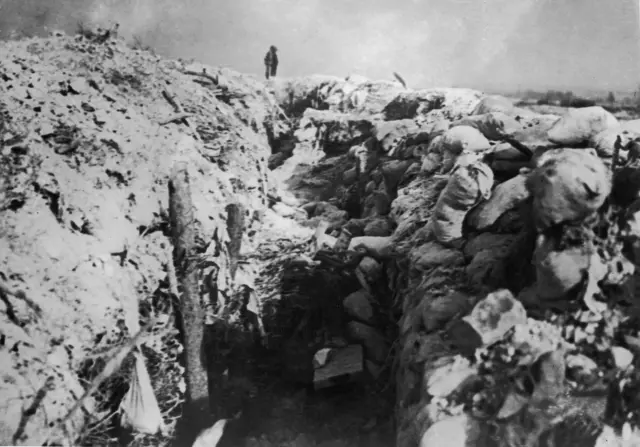 Image source, Getty Images
Image source, Getty ImagesThe Germans are exhausted and the 36th manages its retreat in an orderly fashion.
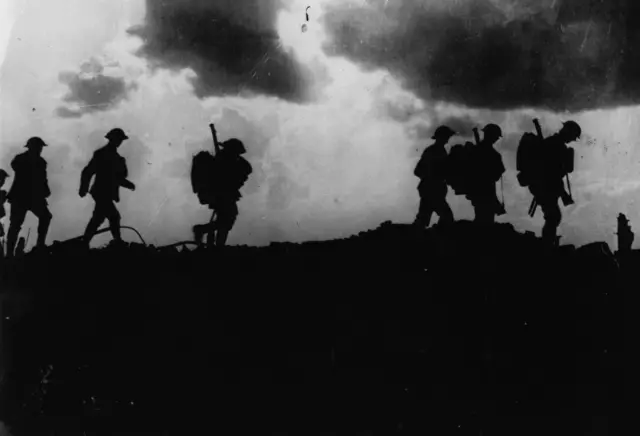 Image source, Getty Images
Image source, Getty ImagesThe Ulster men fall back to the initial German front line. They brace themselves for an onslaught.
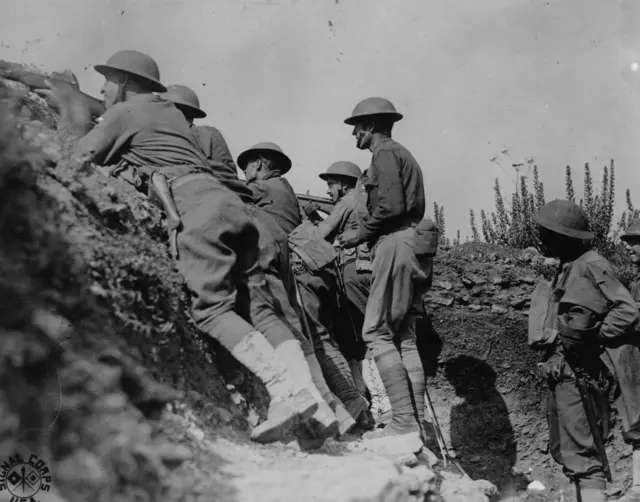 Image source, Getty Images
Image source, Getty ImagesThe order is given to relinquish the Schawben Redoubt.
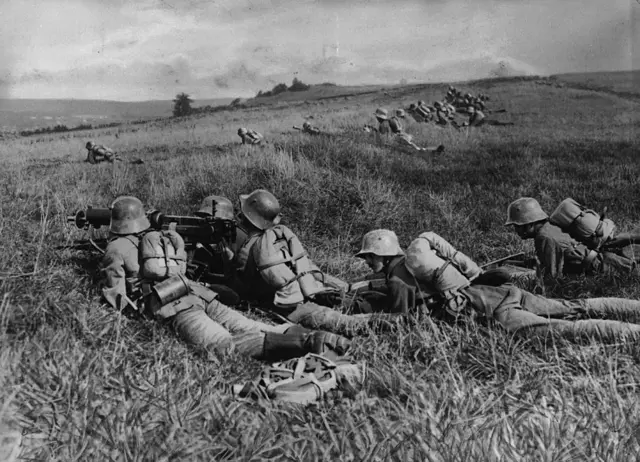 Image source, Getty Images
Image source, Getty ImagesFewer men and fewer bullets means the Ulster Division's defence is becoming increasingly desperate. The Germans just keep coming.
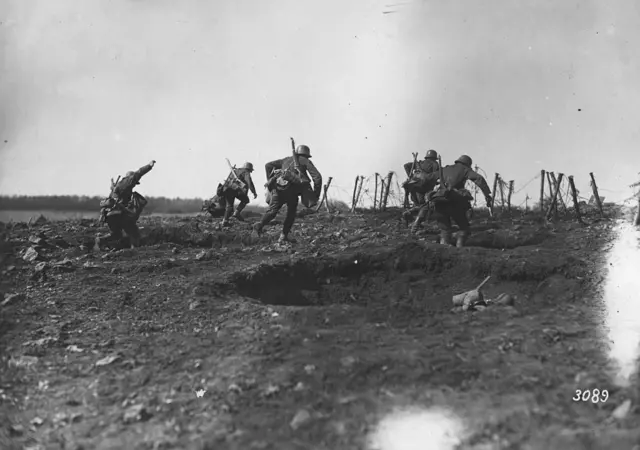 Image source, Getty Images
Image source, Getty ImagesAnother determined German counter-attack. It's coming from three sides.
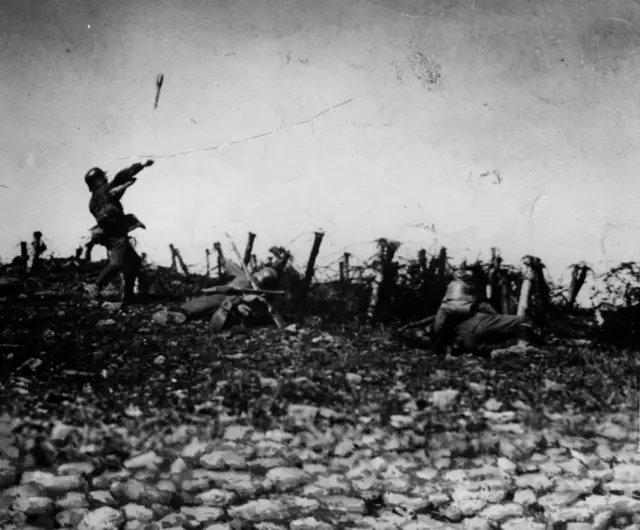 Image source, Getty Images
Image source, Getty ImagesSo far, the Germans haven't succeeded in breaking through the Ulstermen. But it's only a matter of time.
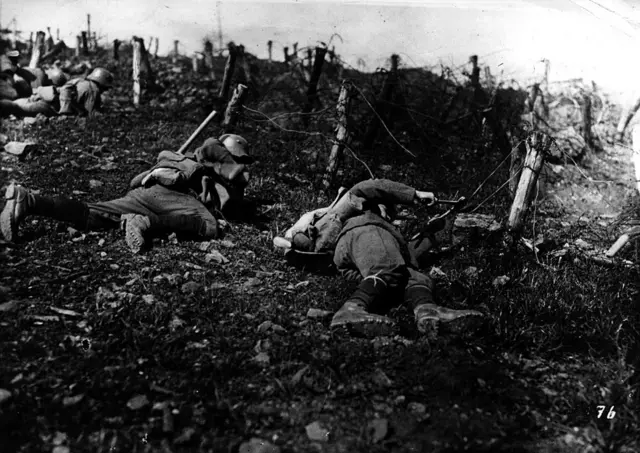 Image source, Getty Images
Image source, Getty ImagesWith scant possibility of reinforcements any time soon, the 36th Division have to attempt to hold on until dark.
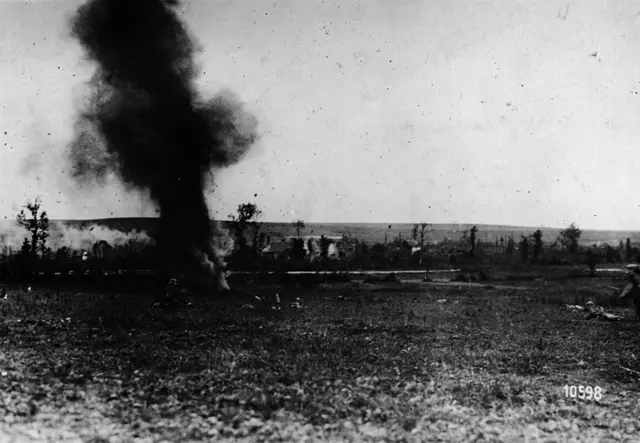 Image source, Getty Images
Image source, Getty ImagesThe German counter-attacks just keep coming.
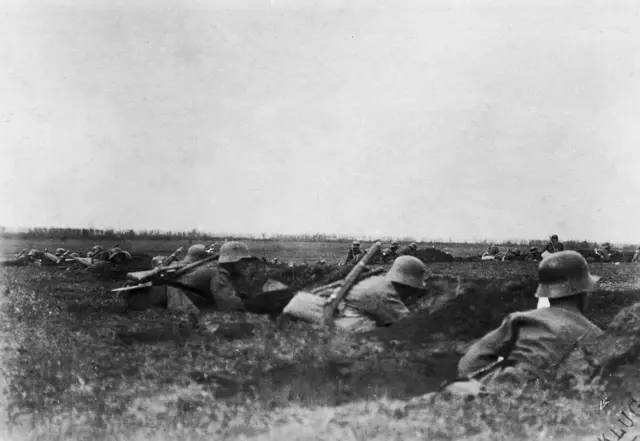 Image source, Getty Images
Image source, Getty ImagesThe counter attack from the Germans is fierce coming from the direction of the village of Grandcourt.
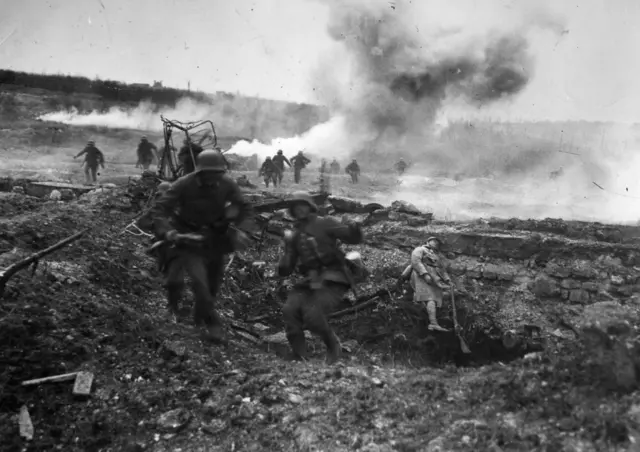 Image source, Getty Images
Image source, Getty ImagesCommunication with the Ulstermen through No Man's Land is nigh on impossible.
The men from the 36th who are at Schwaben are effectively cut off from their nearest comrades. No-Man's Land isn't an option for the Ulster Division at the minute - the German machine gun fire from Thiepval is almost constant.
 Image source, Getty Images
Image source, Getty ImagesThe Germans want the Schwaben Redoubt back and start their counter attacks to take it.
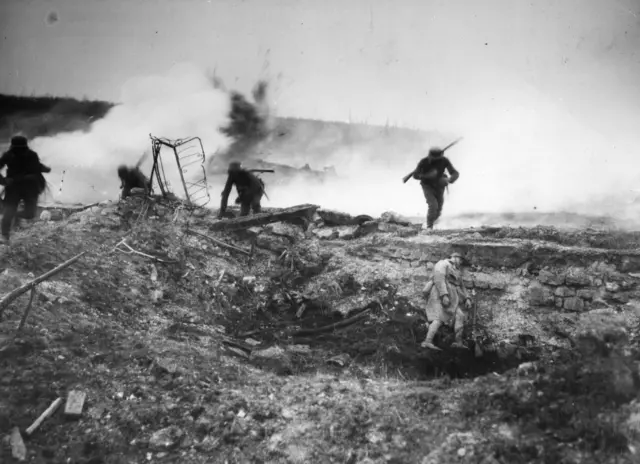 Image source, Getty Images
Image source, Getty Images